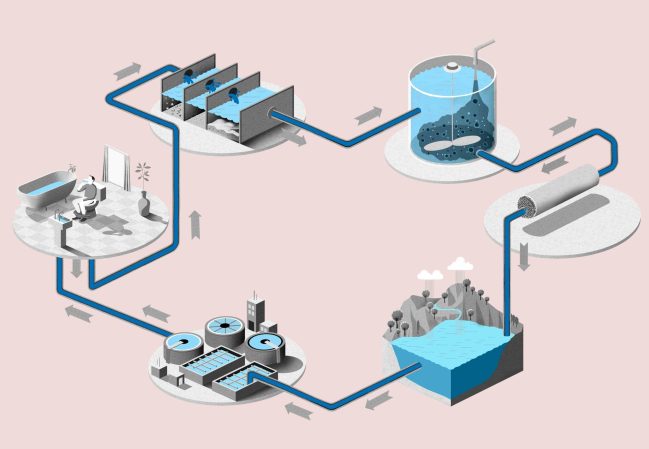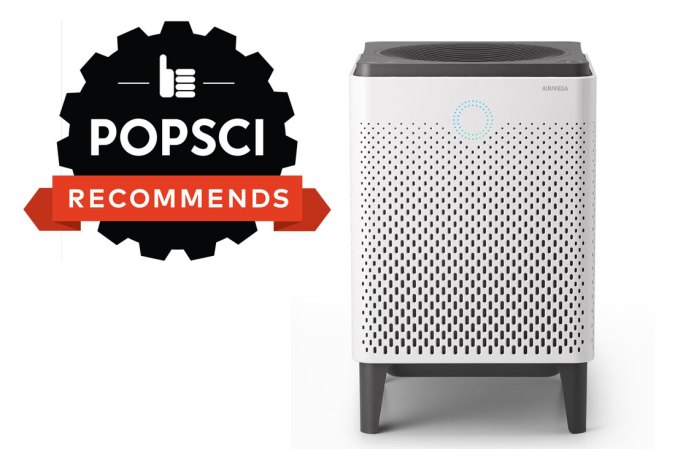

Stay-at-home orders and lockdowns at the beginning of the pandemic led many to plant parenthood. Individuals became drawn to the care and keeping of houseplants, which have been shown to provide comfort and improve well-being during this ongoing harrowing period.
Some researchers turned to plants as well, assessing their potential role in reducing the spread of COVID-19 in confined spaces. Experiments show that plants have the ability to reduce pollutants and airborne volatile organic compounds (VOC), so it’s sensible to assume that they can markedly purify the air. However, this isn’t exactly the case.
Houseplants can remove urban pollutants in indoor spaces
A 2022 study published in Air Quality, Atmosphere & Health found that potted plants in indoor spaces can remove nitrogen dioxide (NO2), a chemical compound that is “representative of polluted conditions regularly encountered in urban areas,” says Christian Pfrang, study author and associate professor in atmospheric science at the University of Birmingham.
The experiment involved three common houseplant species, Spathiphyllum wallisii, Dracaena fragrans, and Zamioculcas zamiifolia, grown under carefully controlled conditions. These plants were exposed to elevated amounts of NO2 in a 0.15 cubic meter chamber, allowing the authors to measure the removal of the pollutant in a one-hour period. About 47 to 62 percent of NO2 was removed within an hour, as a combined effect of the plant and its pot of soil, says Pfrang.
Older studies have shown similar results with different plant species and pollutants. For instance, a 1989 study led by the National Aeronautics and Space Administration (NASA) found that plants like Gerbera jamesonii and Chamaedorea seifrizii may remove VOCs like benzene, formaldehyde, and trichloroethylene.
[Related: Yes, you can overuse grow lights on indoor plants.]
Meanwhile, a 2009 study published in HortScience reported that Fittonia argyroneura and Polyscias fruticosa can remove other VOCs like toluene, octane, and trichloroethylene. These studies demonstrate how plants potentially play a role in reducing indoor air pollution.
But, a plant’s overall ability improve air quality is very limited
Don’t go buying additional houseplants just yet. While they may perform really well in a contained space, the research shows that’s not exactly how it will play out in the real world.
According to a 2019 review published in the Journal of Exposure Science & Environmental Epidemiology, potted plants do not significantly improve indoor air quality. While it’s true that plants may remove certain airborne pollutants—as demonstrated by the studies they reviewed—a building or a room is very different from a sealed chamber, says Bryan Cummings, lead author of the review and research scientist at the Building Environments Laboratory at Drexel University.
Even in the case of Pfrang’s study, the amount of NO2 removed by plants varies widely when translated to room level. “The efficiency of this removal process will strongly depend on ventilation rates and room volumes,” says Pfrang. “In our work, we estimated that five plants in a poorly ventilated small room could remove up to 20 percent of NO2 in a highly polluted environment. Larger rooms would need significantly more plants, and more highly ventilated rooms will benefit less from the plants.”
Indoor spaces, after all, are much larger than a sealed chamber, and when well-ventilated, exchange air frequently with the outdoors. For a larger room size, more time will be needed to achieve the same levels of pollutant reduction, Cummings adds. Due to the indoor-outdoor air exchange, air may be carried out of the building before the plants significantly reduce concentrations of any contaminant.
To quantify the effect of houseplants on improving air quality, the authors reviewed 12 published studies of chamber experiments where plants reduced airborne VOCs and converted their results into standardized air cleaner performance metrics. Their findings don’t contradict the studies they reviewed because they did find that plants are able to purify the air—it’s just highly inefficient and unlikely to make a considerable impact.
“Our analysis shows that a single potted plant rids the air of certain VOCs about one thousand or ten thousand times more slowly than a typical household HEPA filter rids the air of PM2.5,” says Cummings. “In other words, the impact of one houseplant—or even a feasibly large group of houseplants—on any indoor pollutant is negligible.”
[Related: The best indoor plants for people who kill plants.]
Theoretically, if you were to rely solely on houseplants to improve the air quality of a given indoor space, you would need a whole greenhouse of them to make any real impact. According to Cummings, you’d need more than one plant per square foot of floor space to make any substantial difference. ”Hundreds or thousands of plants are required to clean a typical office or bedroom,” he says. “But even the low end of this estimate would interfere with the functionality of any room.”
Living in a room with too many plants also has its downsides. Plants may emit different VOCs like benzenoids and phenylpropanoids and mess with the humidity in a room, potentially creating mold problems, he adds.
There are better air quality options than drowning your home in greenery
So what is a plant-lover who wants purified air to do? Active green walls or air filtration systems could be the answer, says Pfrang. Still, the most effective and sustainable way to improve your air quality at home is to just open your windows, if you’re lucky enough to live somewhere far from smog, haze, or major pollution sources like highways, power plants, or oil refineries, says Cummings.
“I’d also recommend a correctly-sized HEPA filter which is extremely effective at removing airborne particles that can harbor viruses, cause asthma, or be allergens,” he adds.
You can minimize pollutants in your home by never emitting them at all. Cleaning hard surfaces with soap and water instead of harsh chemicals, refraining from burning incense or using essential oil diffusers, and using an electric or induction stove instead of gas are all ways to minimize pollutants in your space, says Cummings.
“Equally as effective and sustainable as window-opening,” he says, “if not more so, is to not emit pollutants into your air in the first place.”















